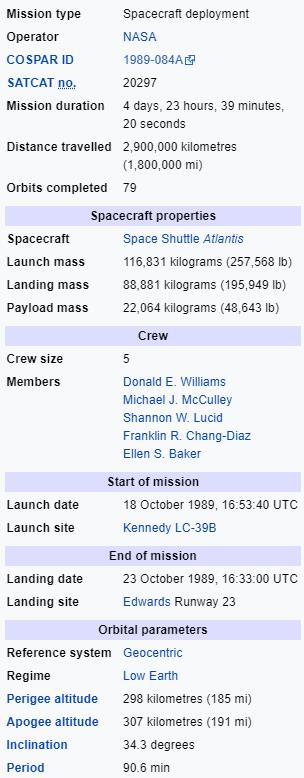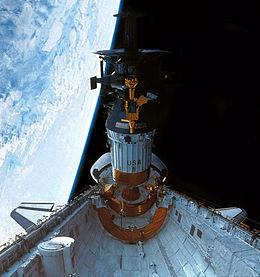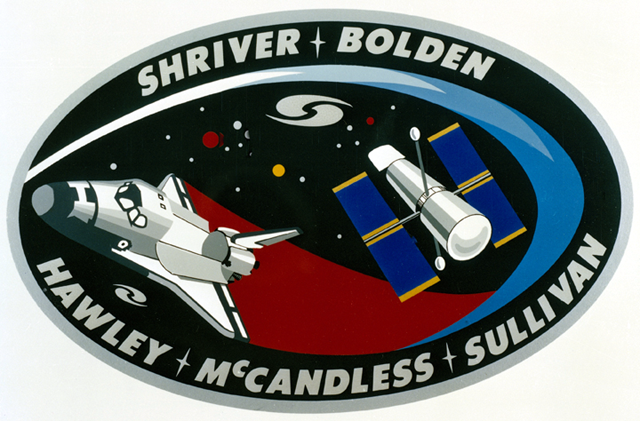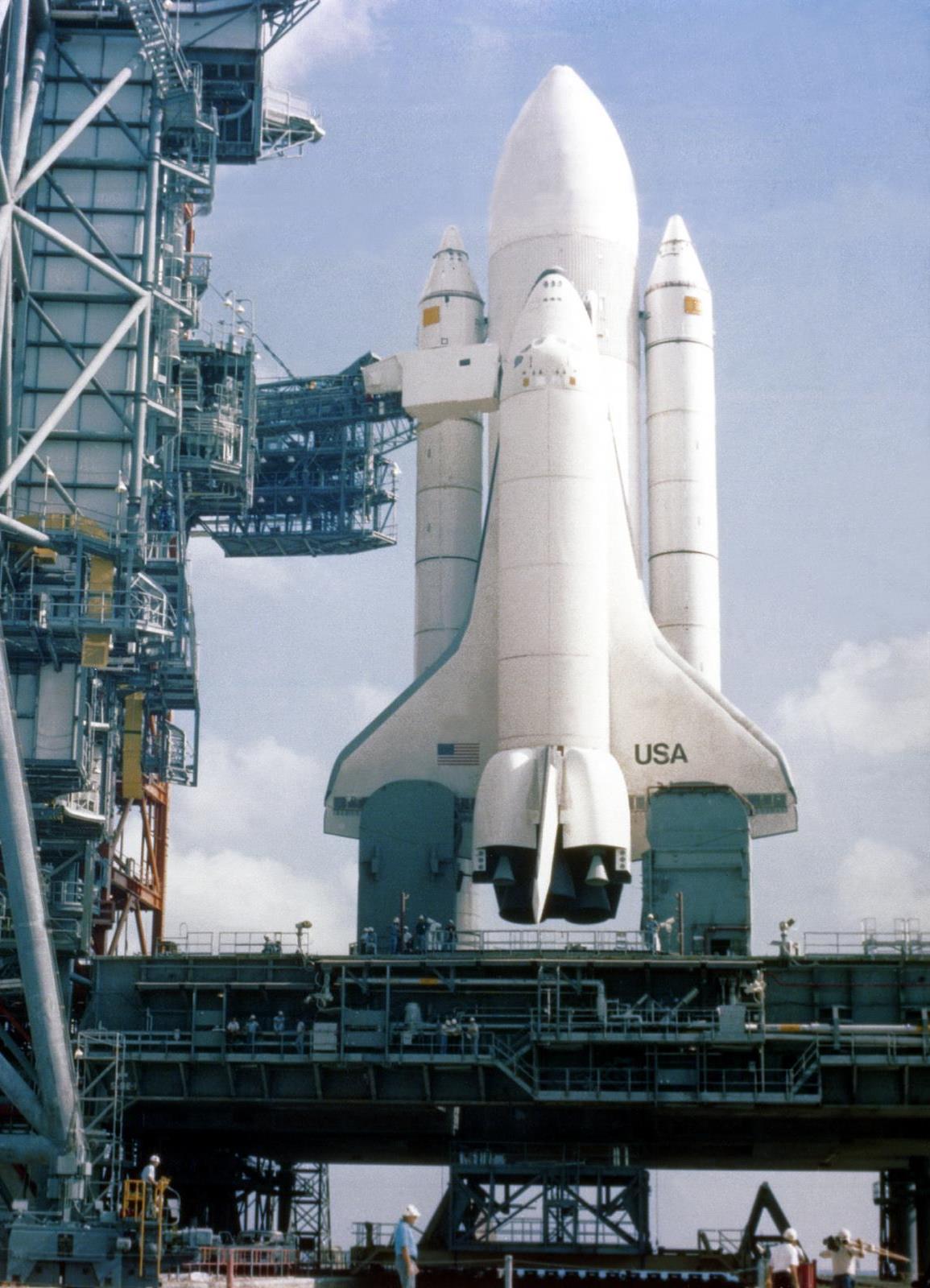Donald E. Williams
Pilot:
Michael J. McCulley
(Only Space Flight) Mission Specialist 1:
Franklin R. Chang-Diaz
(Second Space Flight) Mission Specialist 2:
Shannon W. Lucid
(Second Space Flight) Mission Specialist 3:
Ellen S. Baker
STS-34 was a NASA Space Shuttle mission using Space Shuttle Atlantis. It was the 31st shuttle mission overall, and the 5th flight for Atlantis. STS-34 launched from Kennedy Space Centre, Florida, on 18 October 1989, and landed at Edward Air Force base, California, on 23 October. During the mission, the Jupiter-bound Galileo probe was deployed into space.
(Second Space Flight)
(First Space Flight)
A free template by Lucknowwebs.com for WYSIWYG WebBuilder 8
Astronauts:
The Space Shuttle Missions
STS-34 (R)
Study
Research
Main Index
Space Cosmology
Science Research
*
About
Science Research
Science Theories
Desk
Site Map
BookShelf
Copyright © by Nigel G Wilcox · All Rights reserved · E-Mail: ngwilcox100@gmail.com
Designed by Nigel G Wilcox
Powered By AM3L1A
Pages within this section: USA Shuttle Mission Flights
STS-34
Pages within this section:
32
M
8
SM
Sub-Menu
menu
-
33
34
35
36
37
38
39
Command Pilot:


The primary payload, the Galileo spacecraft with its attached Inertial Upper Stage (IUS), was successfully deployed on its journey to Jupiter. STS-34 was only the second shuttle flight to deploy a planetary spacecraft, the first being STS-30, which deployed the Magellan spacecraft.
Galileo became the first spacecraft to orbit an outer planet and to penetrate the atmosphere of an outer planet. Also, the spacecraft was scheduled to make the first extended observations of the Jovian system and first direct sampling of Jupiter's atmosphere, as well as the first asteroid flybys.
Several anomalies occurred during the flight, but none had a major impact on the mission. On 22 October 1989, an alarm woke the shuttle crew when the gas generator fuel pump system A heaters on Auxiliary Power Unit (APU) 2 failed to recycle at the upper limits of the system. There were also some minor problems with the Flash Evaporator System for cooling the orbiter, and the cryogenic oxygen manifold valve 2, which was left closed for the rest of the mission. A Hasselblad camera jammed twice, and a spare camera had to be used.
Chang Díaz described his second flight as much more "subdued". Demonstrators protested at launch time against the flight because it had a nuclear device on board to power the Galileo spacecraft. He also said they almost aborted the flight in orbit three times because of malfunctions, but continued because the alternative was to land with the nuclear device at an airport in Senegal, which could have caused an "international incident," according to the astronaut. He identified the deployment of Galileo as another tricky part of the mission as he only had a tight six-second opportunity to succeed.
On 21 October 1989, Costa Rican President Dr. Oscar Arias Sanchez talked in Spanish with Chang-Diaz, a native of Costa Rica, and greeted the other crew members via a special telephone linkup. Arias told Chang-Diaz, "You raise high the name of Costa Rica and Latin America in general." Chang-Diaz also explained the mission's objectives in Spanish to Costa Rican listeners on the ground.

Galileo and its IUS in the payload bay of Atlantis















